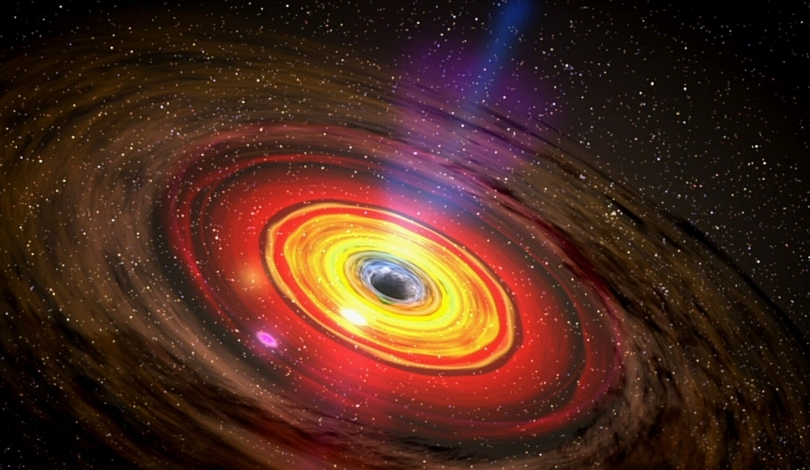Astronomers have discovered that a hyper-luminous infrared galaxy (HyLIRG), 10,000 times brighter than the Milky Way, exhibits a highly organized structure rather than the chaotic morphology typically associated with galactic mergers. By analyzing the distant past, researchers aimed to unravel the mechanisms behind the extreme star formation rates in these rare galaxies. Using advanced telescopes and gravitational lensing, they identified a rotating ring of gas in HyLIRG PJ0116-24, challenging previous notions that such galaxies are primarily products of mergers.
Challenging Prevailing Theories
Comparative studies have historically suggested that the intense star formation in HyLIRGs resulted from major galactic collisions. However, new evidence from PJ0116-24, observed using the Very Large Telescope and the Atacama Large Millimetre/submillimetre Array, indicates otherwise. The systematic observation revealed a highly organized rotating gas ring, implying that such galaxies could achieve maximum star formation independently of mergers. Previous studies failed to detect this level of organization in similar galaxies, leading to a reevaluation of the conditions necessary for extreme starburst activities.
Implications for Galactic Evolution
PJ0116-24’s discovery adds a new dimension to our understanding of galactic evolution. The coherent structure and high metallicity observed align with theories suggesting that some galaxies undergo rapid but organized star formation phases without external triggers. This contrasts with older studies where chaotic remnants of mergers were deemed essential for high star formation rates. The advanced imaging techniques and analysis used in this research provide a more detailed look at these ancient galaxies, offering a clearer picture of galactic development over billions of years.
The role of gravitational lensing was pivotal in these observations. Researchers exploited this phenomenon to magnify and study the otherwise distant and faint HyLIRG. Such methods allowed the team to discern details that previously remained elusive. The discovery that PJ0116-24 is highly rotationally supported, with a rich gaseous substructure, suggests that secular evolution may significantly contribute to galactic formation. Unlike previously studied HyLIRGs, which typically result from major mergers, PJ0116-24 demonstrates that galaxies can achieve extreme luminosities and star formation rates through internal processes alone.
The implications of this research extend beyond understanding individual galaxies. By identifying that organized structures, rather than chaotic mergers, can drive extreme star formation, astronomers can refine models of galactic evolution. Such insights may influence future astronomical studies and the methodologies used to investigate the cosmos. As advanced telescopes continue to observe distant galaxies, the distinction between merger-induced and secularly evolving starbursts will become clearer, potentially rewriting parts of galactic evolution theory.










